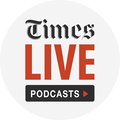
EDITORIAL: Mr President, our stalled economy needs torque, not talk
Loading player...
Long before the grim outcome was confirmed, it was clear the second-quarter GDP number was going to be as no other. And it was no surprise that President Cyril Ramaphosa issued a lengthy statement in response (
In his short time in office, statements lamenting SA’s dismal economic performance have sadly become a regular occurrence. This time there was no attempt to sugar-coat things by describing the recession as “technical”.
Given that the economy has shrunk in seven out of 10 quarters since Ramaphosa became president, that description has always seemed rather unconvincing. Denial meant key structural weaknesses remained unaddressed as internal party political considerations dominated and slowed reform on everything from energy to telecommunications policy.
The extent of the drop in the second quarter, 16.4% vs the previous three-month period, is of course due to unprecedented conditions brought about by the Covid-19 pandemic and the lockdowns in the world. In this context, the annualised 51% drop isn’t really the number to shout about as there should be a sharp rebound in the next quarter, reflecting the phased opening up of the economy.
However, the trend over the past two years shows that before Covid-19, SA was already in trouble. The country’s economic performance stood out for being lacklustre, having failed to track the recovery seen in peer economies since the global financial crisis of 2008 and 2009.
In a speech at a Wits University function in June, Reserve Bank governor Lesetja Kganyago noted that SA had its worst decade of growth on record — worse than the turbulent 1980s and the 1990s, the latter period marked by SA having to manage its transition to democracy and ending with the Asian financial crisis. On a per capita basis, he said, South Africans had been becoming poorer since 2013.
Covid-19 didn’t cause our problems, but it made them a lot worse. Now, the need for action has never been more urgent.
The weakness in the economy has been diagnosed time and again, not just by private sector economists and multilateral institutions, but by the government itself in every Budget Review for the past decade. The Treasury growth strategy — the acclaimed Tito Mboweni paper — is already a year old, without an implementation plan in sight. By now, the cure should be clear for all to see. But in his statement on Tuesday, the president talked about “processes” that must still ...
In his short time in office, statements lamenting SA’s dismal economic performance have sadly become a regular occurrence. This time there was no attempt to sugar-coat things by describing the recession as “technical”.
Given that the economy has shrunk in seven out of 10 quarters since Ramaphosa became president, that description has always seemed rather unconvincing. Denial meant key structural weaknesses remained unaddressed as internal party political considerations dominated and slowed reform on everything from energy to telecommunications policy.
The extent of the drop in the second quarter, 16.4% vs the previous three-month period, is of course due to unprecedented conditions brought about by the Covid-19 pandemic and the lockdowns in the world. In this context, the annualised 51% drop isn’t really the number to shout about as there should be a sharp rebound in the next quarter, reflecting the phased opening up of the economy.
However, the trend over the past two years shows that before Covid-19, SA was already in trouble. The country’s economic performance stood out for being lacklustre, having failed to track the recovery seen in peer economies since the global financial crisis of 2008 and 2009.
In a speech at a Wits University function in June, Reserve Bank governor Lesetja Kganyago noted that SA had its worst decade of growth on record — worse than the turbulent 1980s and the 1990s, the latter period marked by SA having to manage its transition to democracy and ending with the Asian financial crisis. On a per capita basis, he said, South Africans had been becoming poorer since 2013.
Covid-19 didn’t cause our problems, but it made them a lot worse. Now, the need for action has never been more urgent.
The weakness in the economy has been diagnosed time and again, not just by private sector economists and multilateral institutions, but by the government itself in every Budget Review for the past decade. The Treasury growth strategy — the acclaimed Tito Mboweni paper — is already a year old, without an implementation plan in sight. By now, the cure should be clear for all to see. But in his statement on Tuesday, the president talked about “processes” that must still ...

